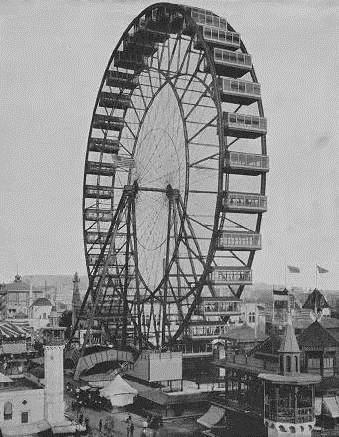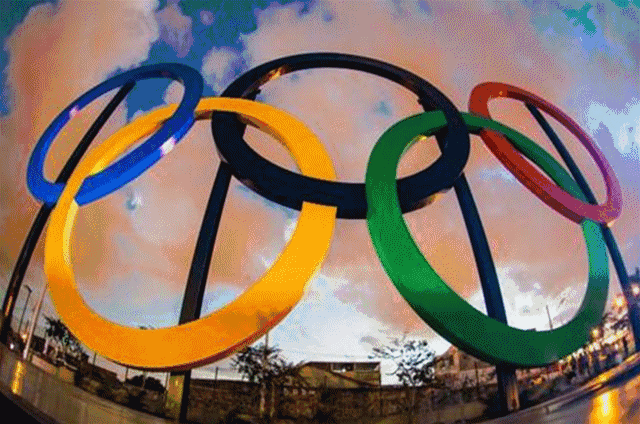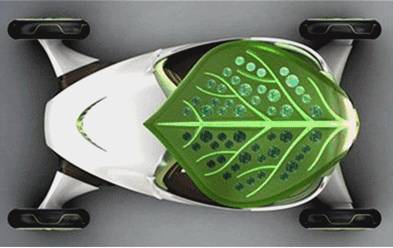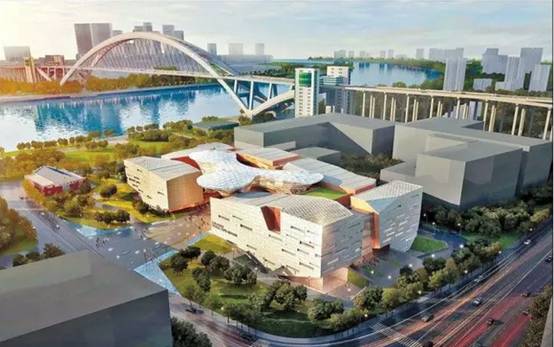
Reputed as the “Olympics” of world’s economy, technology and culture, the World Expo has experienced historical transections from fairs in the Middle Age to industrial and art exhibitions in the industrial period and then to the first World Expo in 1851, which has been eventually evolved into the modern World Expo.
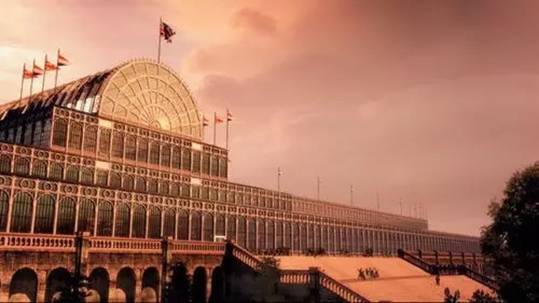
As the window for displaying fruits of human civilization and a grand gathering for exchanges, the World Expo has in its genes the characteristic of display, exchange and ostentation. Its essence is the expansion of industrial capital, something similar to the missionary instinct of a religion, while wars are measures to settle disputes and claim demands resorting to force. Both of them are expansion in their nature. This can be proved when we take a detailed insight into the World Expo history—the World Expo and wars are closely interconnected with each other.
We have a few examples listed below:
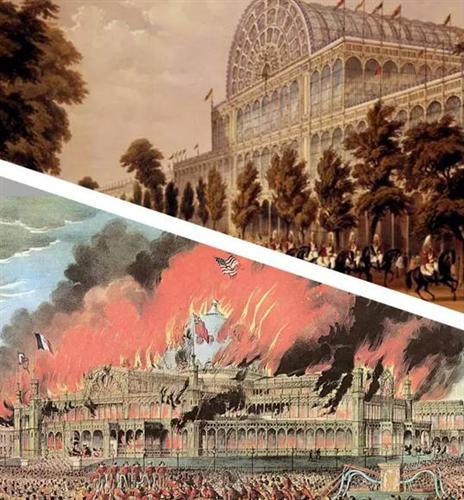
The Crystal Palace destroyed by fire in 1936
The worldly renowned Crystal Palace, the landmark of the First World Expo in 1851, was destroyed by fire in 1936 with only two towers remained. The latter were demolished in the WWII for not being used as geographic coordinates by German Nazi’s aircrafts.
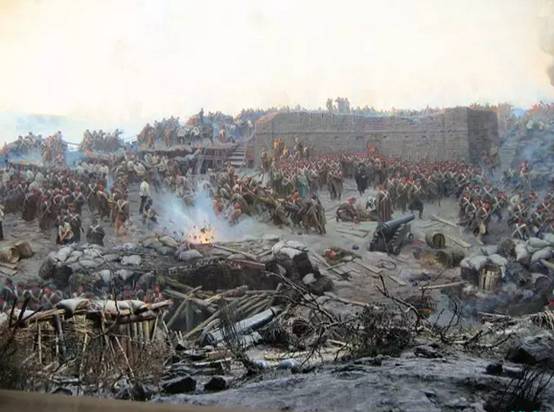
The Crimean War
Queen Elizabeth payed a visit to France during the period of World Expo in 1855 when smoke of the Crimean War was just in the air.
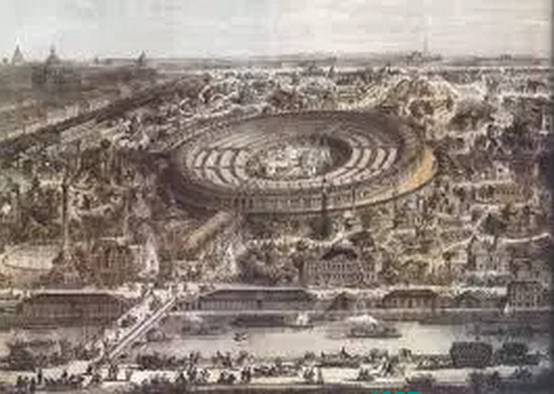
Paris World Expo in 1867
In 1867 when the fourth World Expo was held in Paris, Remington Arms Company, the American weapon producer, brought their most cut-edge breech single-shot rifle—the Remington Rolling Block Single-shot Rifle. This rifle appealed almost all the countries around the world once it was exhibited. It was popular among the armies of many countries even though not widely armed in the force of the United States. In its prime days, it was widely used in over 10 countries. It is worth acknowledging that the government of Qing Dynasty had also bought and even tried to clone this gun. With a production amount up to over 4 million, the Remington Rolling Block Single-shot Rifle is one of the most successful breech single-shot rifles in the world. The French army also bought this rifle to increase their victory in the Franco-Prussian War. Unfortunately, according to historical documents, the war had been ended before their weapons were delivered to France.

Remington Single-shot Pistol

The 0.5 Inch M1865 Navy Pistol Designed by Joseph Lied
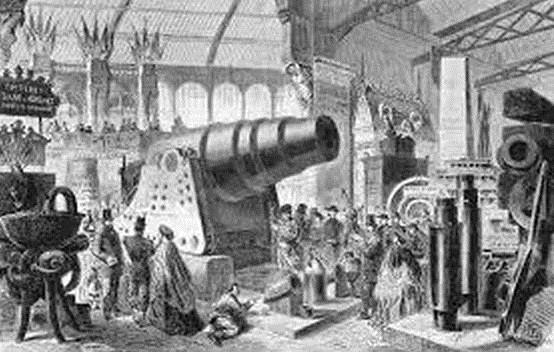
Krupp Cannon
The Krupp Cannon also made its debut on this World Expo that was hosted just before the outbreak of the Franco-Prussian War. Prussian forces defeated French forces, which caused the collapse of the Second French Empire. The Qing Dynasty also bought this kind of cannon to equip the coast defense in Xiamen and other coastal cities; however, they found their efforts to defend the invasion of western powers in vain. Today, the stainless steel company of Krupp Group is just beside the former Shanghai World Expo Site on the Huangpu River, telling the rises and falls of world events.
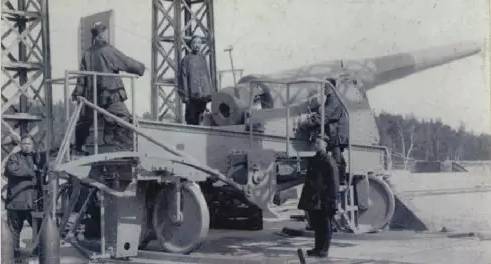
The Qing Dynasty bought Krupp Cannon to equip the coast defense in Xiamen
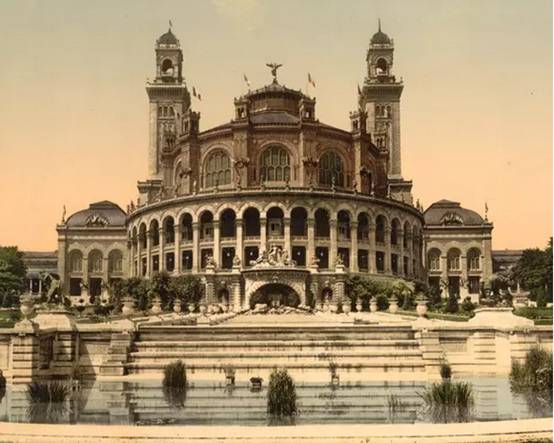
Paris World Expo in 1878
The Trocadero Palace in the Paris World Expo in 1878 was named in memory of the victory of the Trocadero Battle led by Napoleon. The Trocadero Island is a small isle in Spain. In 1823, Napoleon took control of the fortresses on the island.
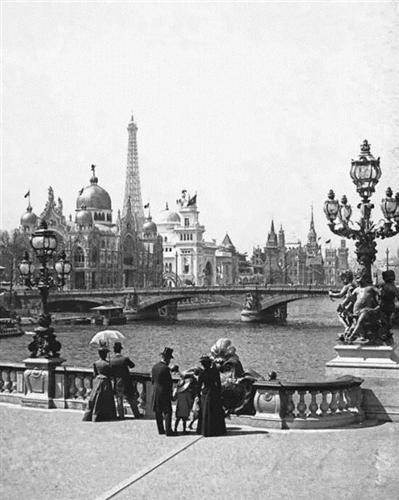
Pont Alexandre III
The Pont Alexandre III built in 1900 was in memory of the Franco-Russian Alliance against Germany at that time.
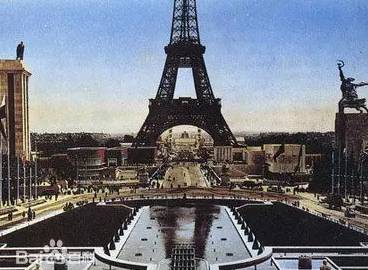
Paris World Expo in 1937
At Paris World Expo in 1937, the pavilions of the Soviet Union and Germany stood opposite to each other. The German eagle opposed the statue of workers and female farmers in the collective farms, which was an authentic depiction of the dark atmosphere of war at that time.
We have selected several examples comparatively close related to war to show you that the World Expo is not merely a paradise within the enclosing wars, and it is far from the ball of princes,, and, can be threatened by war.
If all these examples above show, intentionally or inadvertently, messages of war, then, the following stories are about human being’s introspections on wars.
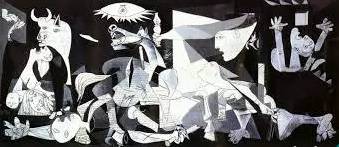
Guernica, Picasso
The World Expo 1937 also left human civilization a prestigious heritage—Guernica, the famous painting of Picasso in the 1930s. The masterpiece has extraordinary historical significances, depicting German forces’ crazy and cruel boom attack over the small Spanish town known as Guernica in 1937. It was painted, under the designation of the government of the Spanish Republic, for the Spanish Pavilion in the International Expo hosted by Paris in 1937.
The painting combines both surrealism and cubism to present human suffering, struggle and barbarity in the war. On the right side of the painting, a woman with her hands up is falling from a burning house; beside her, another woman with a deformed leg is struggling to the center of the painting. On the left side of the screen, there are a mother and her dead child. On the ground, the broken body of a soldier catches our eyes—its severed hand clasping a broken sword while a flower is growing beside the sword. The picture is a brilliant anti-war poster accusing the fascism and becomes a cultural icon of people’s reflection on war. However, the scars and bruises of war have been left in the human history.
Today, the painting hangs on the wall of the UN Conference Hall, reminding people, especially politicians and diplomats, that catastrophe should be remembered in making any decision so as to avoid such kind of tragedy with the collective intelligence of human being.
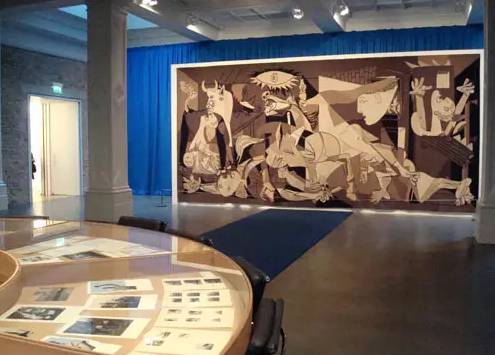
Guernicain theUN Conference Hall
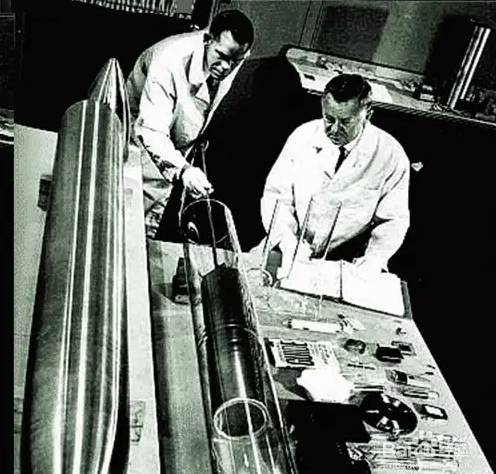
The Time Capsule at New York World Expo in1939
The worldly renowned Time Capsule buried by the Westinghouse Electric Company in 1938 was a special activity to embrace the New York World Expo in the year after. It was buried beneath the expo venues for the future generations and to be dug out 5,000 years later to learn about the contemporary civilization through all the representative goods such as cloths, seeds, cigarettes, shavers and a letter wrote by Einstein:
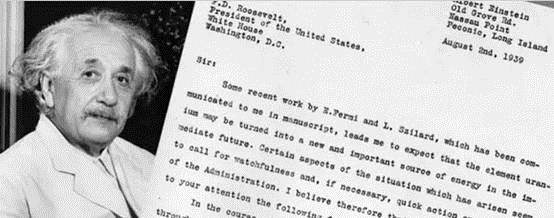
There are a lot of genius in our times, and their invention can make our lives much more comfortable. We usethe electric power to emancipate humans from a variety of heavy manual labor. We use the power of machines across the ocean, and learn to fly; we use electromagnetic waves to easily convey information from a corner of the earth to another corner.
However, the production and distribution of commodities is entirely unorganized. Everyone lives in the fear of unemployment. Moreover, people living in different countries would kill each other over a period of time. For these reasons, all the people,when thinking of the future, would be anxious and scared.
That is because common people have the lower intelligence level and moral qualities, compared with those who truly contribute to the society.
I believe that future generations will be in a proper pride and sense of superiority to read this letter.”
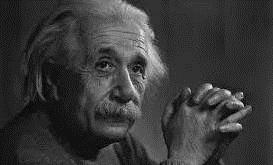
This scientist, philosopher and prophet made his warning before the atmosphere of war perceived by the world. However, the scientific giant’s words could not deter human’s malice and lust. The WWII followed hot on the heels of this World Expo. The human society did not realize the significance of peace until the gears of war had almost crashed the whole world.
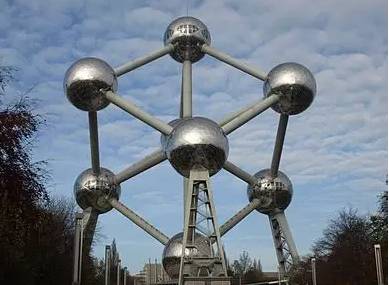
The Atomium of BrusselWorld’s Fair in1958
We have realized, from the prophesy of Einstein, that technology is a double-edged sword which can benefit human beings as well as bring catastrophe triggered by chaos due to our greedy. The Atomium of the Brussel World Expo in 1958, the first world expo held after the WWII, expresses this connotation. The Atomium was an iron element enlarged by 1,650 times which is composed by 9 huge balls interconnected by steel tubes. These 9 balls represent 9 iron atoms as well as 9 provinces in Belgium. The highest ball is functioned as sightseeing hall and the other eight are used for exhibitions for peaceful use of technology such as atomic energy, nuclear technology, and solar technology and so on.
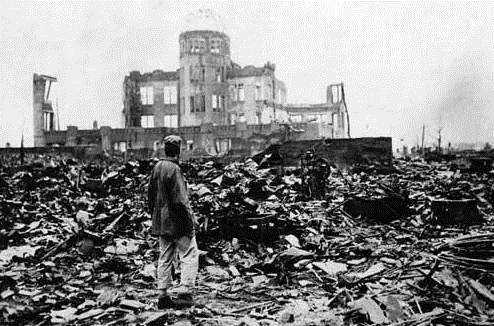
This reminds us the atom bombs wrecked Hiroshima and Nagasaki in 1945, which helped to end the war in Pacific region while also killed hundreds of thousands of civilians. The formidable power of atomic weapons has aroused our fear, caused incurable injures physically and psychologically to the local residents and the harm of nuclear radiation has even endangered their offspring.
Throughout human history, conflicts between nations have never been evolved into world wars like those in the 20th century. If we say that men’s greed and desire are origins of the reason why WWI and WWII become worldwide disasters, then, the technological development in communication and transportation make it possible for forces and war materials to transport world widely. Even in its very beginning, the World Expo was a stage advocating science, technology and power of human. Steam engine and combustion engine enables us to travel thousands of miles a day and enlarged our sphere of influence; telegraph and telephone realize human’s dream of possessing the legendary “clairaudience” and “clairvoyance”. These innovations have all gained luster in the World Expos they attended; however, they have also expanded and evolved the wars in the Europe to almost every corner of the globe. With the help of science and technology, human conflicts and wars have become more devastating than ever and caused much graver catastrophe than that of the Age of Cold Weapon. We can recollect the history of the Krupp Cannon in the Franco-Prussian War, the swift transportation of German army towards Western and Eastern Europe in 1914, and Hitler took command of The Campaign for North Africa in his “Wolf's Lair”. Human science and technology spread fast through the World Expo. Thus, fruits of the Industrial Revolution have its influence in almost every aspects of human life, however, not all of them are beneficial. On the one hand, the steam engine makes travelling much easier; on the other hand, it takes war to faraway places. If we say that the combustion engine has thrived automobile culture that is vital to human life, we may not neglects another usage of this innovation—in war machines like fighter aircrafts and tanks. We shall not only view these glamorous exhibits from positive prospective but also see the brutal aspect of them (e.g. wars) since the World Expo is a platform of all kinds of exhibits.
Apart from wars and invasions, the World Expo also had a history of shameless ostentation of western countries’ colonial achievements, showing their prejudice undisguisedly.
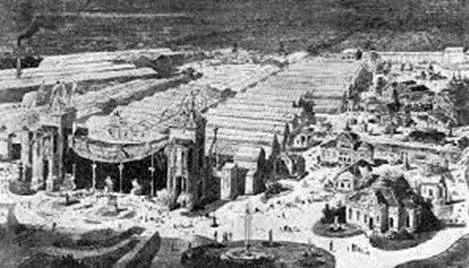
The Colonial and Technology Products Expo in 1883, Amsterdam, the Netherlands
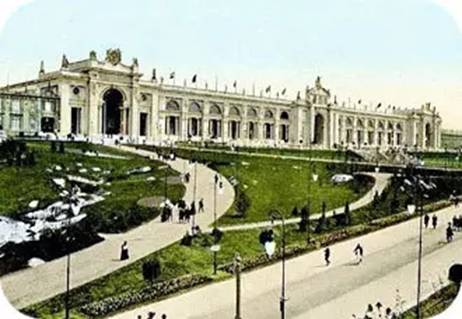
BrusselWorld Expoin 1910
In the World Expo history, several events were held on the theme of colony, such as the 1883 Colonial and Technology Products Expo in Amsterdam, the 1910 Brussel World Expo in Belgium, the 1930 Antwerp Colonial, Maritime and Vlaams Art Fair, and the 1931 Paris International Colonial Expo. The unenlightened lifestyles of colonial people were constantly used as exhibits to entertain local audiences of Expos.
In those early World Expos, the government of Qing Dynasty entitled Robert Hart, the foreigner in charge of the Chinese Customhouse, to direct China’s participating in the World Expo. These activities contributed, to some extent, to China’s going global, but also tarnished the image of Chinese nation through exhibiting models of bound feet, opium pipes, shackles of torture and pictures of the last judgment in the hell. These exhibits met westerners’ desire of hunting for novelty and highlighting the advancement of western civilization. For example, a Chinese giant named ZhanJiuwu and dwarfs were exhibited in the 1867 Paris World Expo, and Chinese dwarfs were used to solicit visitors in the 1876 Philadelphia World Expo and the 1901 Buffalo World Expo.
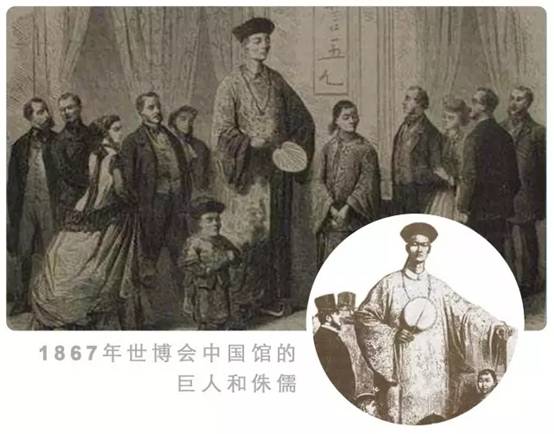
The Philippine Folk Village was the most extraordinary exhibit of colony in the 1904 St. Louis World Expo. Philippines, the same as Louisiana, was a colony acquired by the US after its victory over Spain. The Expo, themed as the 100 anniversary of the Louisiana Purchas, set the Philippine Folk Village in the purpose of displaying the US’s achievements in colonial administrationfurther. The aboriginals and scenes of primitive tribes in the village were just the same as those in Philippines. The aboriginals danced for visitors in the day and slept in the Expo Park in the night. The men were naked, with only rags or animal hides around their waists; and the women wore leather dresses with unique ornaments.
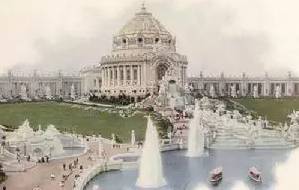
St. Louis World Expo in 1904
The Inuit's cabin was also exhibited on this event to satisfy American’s curiosity on exotic cultures.
However, under this background of prevailing colonialism, an anti-colonialism exhibition was held, just beside the site of 1831 Paris World Colonial Expo, in the same year. The exhibition, opening to the public from September the 19th, 1931 to 1932, themed totally different from the colonial expo and exposed various crimes the colonial countries had committed in the process of colonial expansion.
This exhibition, named the Truth on the Colonies, consisted of three sections. The first section reviewed the history of colonial conquest, disclosing the crimes in colonial process by referring to critics of French writers Albert Londresand Andre Gide on servitude system in colonies. It also mentioned about the troops from colonies fought in the WWI and died in Europe. The second part introduced the “ethnic policy” in the Soviet Union and compared it with the “colonialism of the imperialism”. The last section introduced cultural issues under the background of colonialism.
Unfortunately, the exhibition was a failure under the pressure of public opinion holding the “white supremacy”. Throughout its exhibition period of 8 months, merely over 5,000 people visited, which was almost negligible compared with the colonial fair hosted by French government.
Therefore, it can be concluded that the World Expo, derived from the Industrial Revolution, did not refuse to display war-related contents or overcome the vanity of conquering other nations.
Nevertheless, there are also concerted efforts to solve common issues, such as the First International Potent Conference held during the1873Vienna World Industrial Fair, the Berne International Union for the protection of artistic and literary works and the Berne Convention for the Protection of Literary and Artistic Works formed during the 1878 Paris World Expo, and the Socialists' Congress held during the 1889 Paris World Expo. It was on the1889 socialists' Congress that May 1 was assigned as the anniversary of the world proletariat, which is the origin of the May Day. However, these efforts have not become a dominant force until the conduct of modern expo which is the platform for human exchange and combatting common problems.
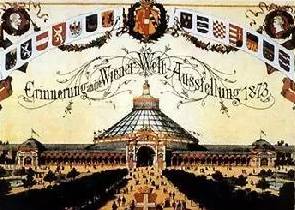
Vienna World Industrial Fair in 1873
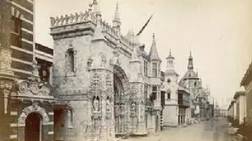
Streets connecting different countries’ pavilions in the1878 Paris World Expo
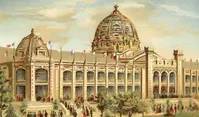
Paris World Expo in 1889
The theme of 1958 Brussel World Expo was “Science-Oriented Civilization and Humanism”. The theme of 1970 Osaka World Expo was “Progress and Harmony for Mankind”, shifting previous expos’ focus on scientific and technological products to mankind, progress and harmony. The theme of 1974 Spokane World Expo was “Advance of Pollution Free”, which directly indicated crucial challenges confronted human being today. “Better city,better life” was the theme of 2010 Shanghai World Expo, aiming at seeking a harmonious mode of dwelling, living and working for the future human beings. TheYeosu World Expo was under the theme of “The living ocean and coast”, presenting the blue habitat that composed 70% of the earth surface. The 2015 Milan World Expo was themed“Feeding the Planet, Energy for Life”. From the themes of all the above modern expos, it can be seen that the World Expo is no longer confined to displaying scientific and technological innovations in a specific field or competition of national power.Thethemes of modern expos concern almost every aspect of human’s common life and have changedthe focus from scientific and technological innovations to environment, energy, ocean and city. The World Expo has become less and less related to wars and competitions between nations and has eventually focused on solving challenges confronted the human race through cooperation and collective wisdom. Therefore, it is obvious that such event has changed from an arena of science and technology to an ethical plot for the harmonious coexistence among mankind, technology and nature.
According to psychology, people tend to present brighter aspects of themselves while hide their dark sides when in front of others. The World Expo is, as well, not only a Disneyland that displays novelty, but also a coin with two sides. Throughout its history, the positive and ambitious efforts of seeking the truth can be frequently seen, while the human ignorance, narrowness and jealousy are not unfamiliar scenes.
As a concentrated demonstration of human activities, the World Expo works, in its publicity role, as a loudspeaker that makes both the good and the bad more striking. The event acts as a platform for communication in a specific social background and it is just like a microcosm of a time, which reflects the social state of that time including the state of war and conflict. Sometimes, it even shows wars directly. Some of the inventions displayed on the exhibition were used in wars afterward. It is clear that wars would go on stage after World Expo failed to satisfy human desire and greed.
The Palais de Chaillot which has been the venue of several World Expos and witnessed the glory of that grand gathering once hung up the Nazi Swastika flag during WWII, placed antiaircraft projectiles to crack down the Nazi forces before the liberation of Paris, hosted the sixth UN Conference in its surrounded temporary constructions, and actedas the temporary stationfor the NATO. Nowadays, the palace is used as a museum and opera house. Expos and wars have left their traces on this historical site;however, what we need to introspect is where the wheel of history is going forward.

